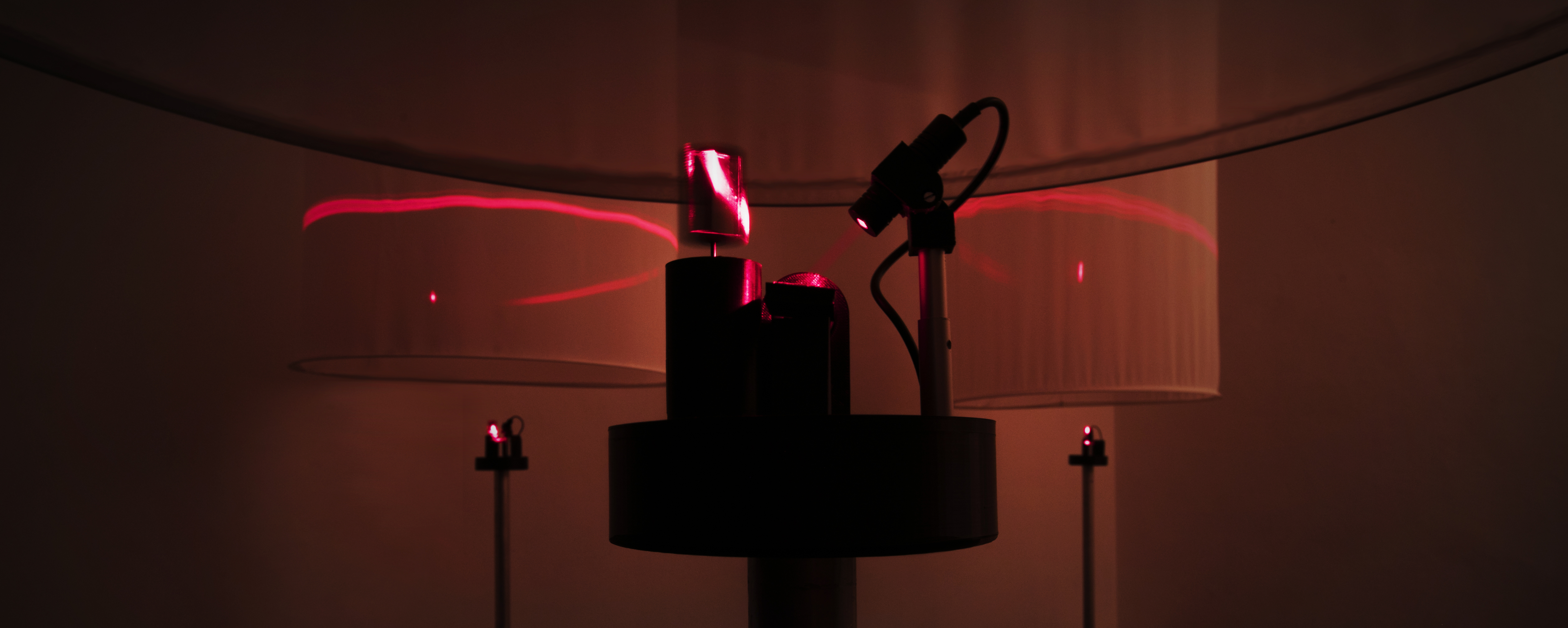GW170817 SPECULUM
About the Project
About the Project
In 1915, when publishing his General Theory of Relativity, Einstein changed the world conception and opened the door to an infinity of new possibilities by arguing that gravity is the product of mass bending space and time. Therefore, when powerful masses in space are set in motion, this causes waves in space-time, which rush through the cosmos at the speed of light and deform all objects on their way, according to their distances.
For forty years, astrophysicists tried unsuccessfully to prove the existence of gravitational waves, which until then had only been assumed theoretically and observed indirectly trough measurements of binary pulsars frequencies. But even if this theory stayed purely hypothetical, it was used as the theoretical basis for astrophysical research.
This situation is very common in physics - theories are put forward that yet have to be proved or refuted. In this process, theoretical assumption and valid proof, genuineness and speculation are constantly competing. Most of the times this concerns cosmic events, which are only perceptible to humans through the use of advanced technical instruments. Only three years ago the existence of gravitational waves was finally proven, with the help of super-detectors at the Laser Interferometer Gravitational-Wave Observatory (LIGO) in Louisiana and Washington.
For forty years, astrophysicists tried unsuccessfully to prove the existence of gravitational waves, which until then had only been assumed theoretically and observed indirectly trough measurements of binary pulsars frequencies. But even if this theory stayed purely hypothetical, it was used as the theoretical basis for astrophysical research.
This situation is very common in physics - theories are put forward that yet have to be proved or refuted. In this process, theoretical assumption and valid proof, genuineness and speculation are constantly competing. Most of the times this concerns cosmic events, which are only perceptible to humans through the use of advanced technical instruments. Only three years ago the existence of gravitational waves was finally proven, with the help of super-detectors at the Laser Interferometer Gravitational-Wave Observatory (LIGO) in Louisiana and Washington.
LIGO was able to measure the otherwise barely noticeable changes caused by these astronomical events. In 2017 the scientists Rainer Weiss, Kip Thorne and Barry Barish were rewarded with the Nobel Prize in Physics for their role in detecting gravitational waves.
Speculum, the Latin word for mirror, is the root of the verb speculate, which used to mean looking at the stars, and also speculation, the forming of a theory or conjecture without firm evidence. GW170817 SPECULUM seeks to investigate, as well as speculate, around a particular event: the recording of gravitational waves produced by the merging of two neutron stars on August 17th 2017 by the LIGO Hanford, LIGO Livingston and Virgo detectors (also known as GW170817).
In the installation, laser beams are reflected by rotating mirrors on to a cylindrical fabric, creating waves according to the event’s data recorded in each one of the 3 detectors. Gravitational waves moving through time and space, which were transformed into measurable data sets, are translated back into sound and light in motion, through the same means used to detect them. The generated visuals behave differently than the original gravitational waves, yet they are able to show this cosmic phenomenon in a more perceivable way.
Credits: Riccardo Torresi, Maxime Lethelier, Asako Fujimoto
Curated by: Artburst Berlin
more about LIGO
more about the data
This research has made use of data, software and/or web tools obtained from the LIGO Open Science Center , a service of LIGO Laboratory, the LIGO Scientific Collaboration and the Virgo Collaboration. LIGO is funded by the U.S. National Science Foundation. Virgo is funded by the French Centre National de Recherche Scientifique (CNRS), the Italian Istituto Nazionale della Fisica Nucleare (INFN) and the Dutch Nikhef, with contributions by Polish and Hungarian institutes.







Data strain of the audiovisual piece, 2048 seconds

p
Photography Credits: Marta Gobbi, Maxime Lethelier, Riccardo Torresi